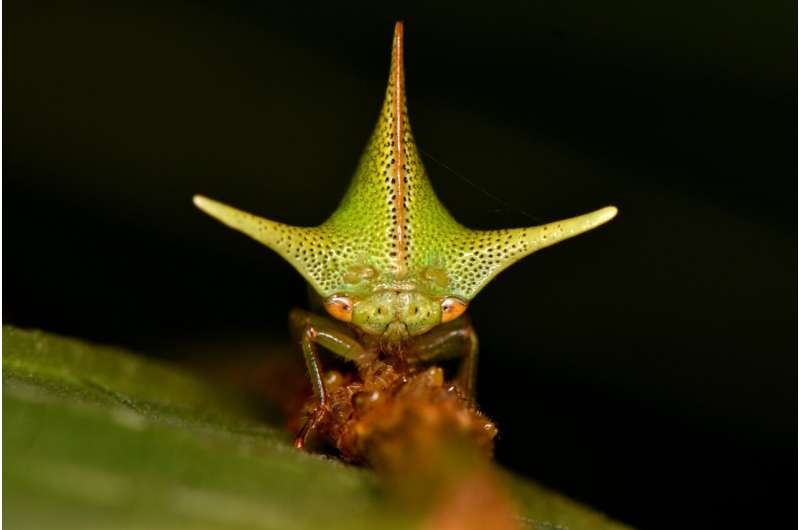
Research from the University of Bristol suggests that the ability to detect static electricity could be a significant factor in the evolution of the unusual body shapes found in treehopper insects. In a study published in the Proceedings of the National Academy of Sciences on August 2, 2025, Dr. Sam England and Professor Daniel Robert explored this hypothesis, shedding light on the biodiversity of these insects.
Treehoppers, with over 3,000 species exhibiting a wide array of forms, are known for their extraordinary morphological diversity. Some display features like horns, spines, and tridents. Despite their intriguing appearances, scientists have struggled to elucidate the evolutionary purpose behind these adaptations. While some theories propose functions such as camouflage or defense, they do not comprehensively apply to the entire treehopper family.
Building on previous findings that insects like bees and caterpillars can sense static electricity, Dr. England and Professor Robert conducted experiments to investigate whether treehoppers’ unique body shapes enhance their ability to detect static fields. Their research revealed that predatory wasps emit static electricity, prompting treehoppers to retreat from electric fields.
Using advanced computational methods, the researchers demonstrated that the distinct morphologies of treehoppers could amplify the strength of electric fields around them, thereby heightening their sensitivity to static electricity. They also discovered that predatory wasps possess notably different electrostatic charges compared to the stingless bees that often protect treehoppers from threats. This finding implies that treehoppers might be able to identify friends and foes based solely on electrical signals.
Dr. England remarked, “We think our study provides a really exciting launch pad for investigating static electricity as a driver of organismal morphology more generally.” He emphasized that many other species with extreme shapes remain unexplained and that their research offers the first evidence linking electrostatic senses to morphological evolution.
Looking ahead, the researchers aim to further explore how various treehopper shapes might be adaptive in different electrical environments. Dr. England stated, “If we can link treehopper shapes to certain aspects of their electrical ecology, like specific predators which approach from certain angles with particular static charges, this would really begin to strongly support our ideas around static electricity as an evolutionary driver.”
This groundbreaking study opens new avenues for understanding the relationship between morphology and sensory perception in treehoppers and other species. The implications of these findings could extend beyond entomology, prompting further research into the evolutionary drivers of shape and function across the animal kingdom.
For more detailed information, refer to the research article by Sam J. England et al, titled “Electroreception in treehoppers: How extreme morphologies can increase electrical sensitivity” in the Proceedings of the National Academy of Sciences.





